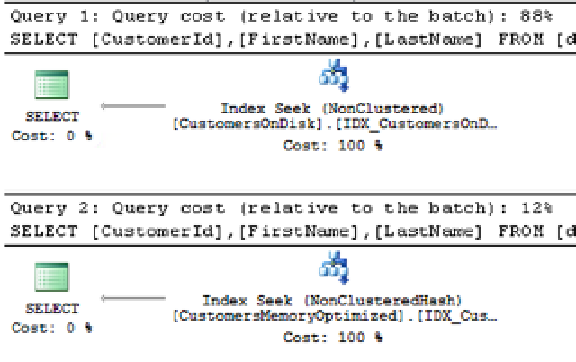Database Reference
In-Depth Information
Listing 32-4.
Composite hash index: Selecting data using both index columns as predicates
select CustomerId, FirstName, LastName
from dbo.CustomersOnDisk
where FirstName = 'Brian' and LastName = 'White';
select CustomerId, FirstName, LastName
from dbo.CustomersMemoryOptimized
where FirstName = 'Brian' and LastName = 'White';
As you can see in Figure
32-4
, SQL Server is able to use an
Index Seek
operation in both cases.
Figure 32-4.
Composite hash index: Execution plans where queries use both index columns as predicates
In the next step, let's check what happens if you remove the filter by
FirstName
from the queries. The code is
shown in Listing 32-5.
Listing 32-5.
Composite hash index: Selecting data using leftmost index column only
select CustomerId, FirstName, LastName
from dbo.CustomersOnDisk
where LastName = 'White';
select CustomerId, FirstName, LastName
from dbo.CustomersMemoryOptimized
where LastName = 'White';
In the case of the on-disk index, SQL Server is still able to utilize an
Index Seek
operation. This is not the case
for the composite hash index defined on the memory-optimized table. You can see the execution plans for the queries
in Figure
32-5
.

